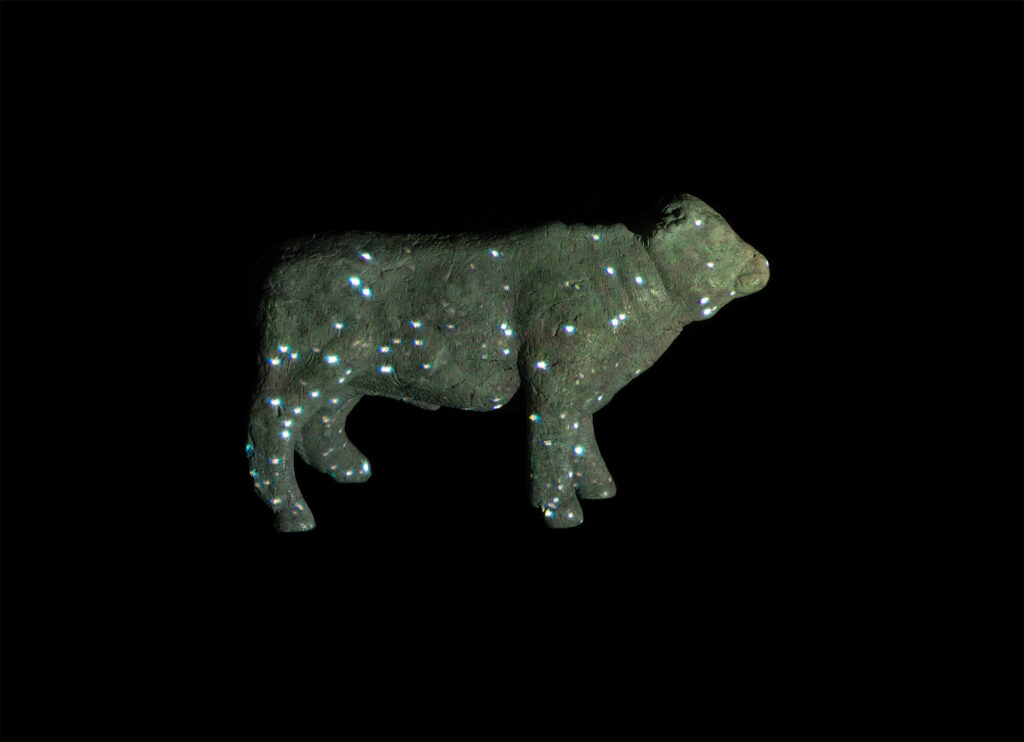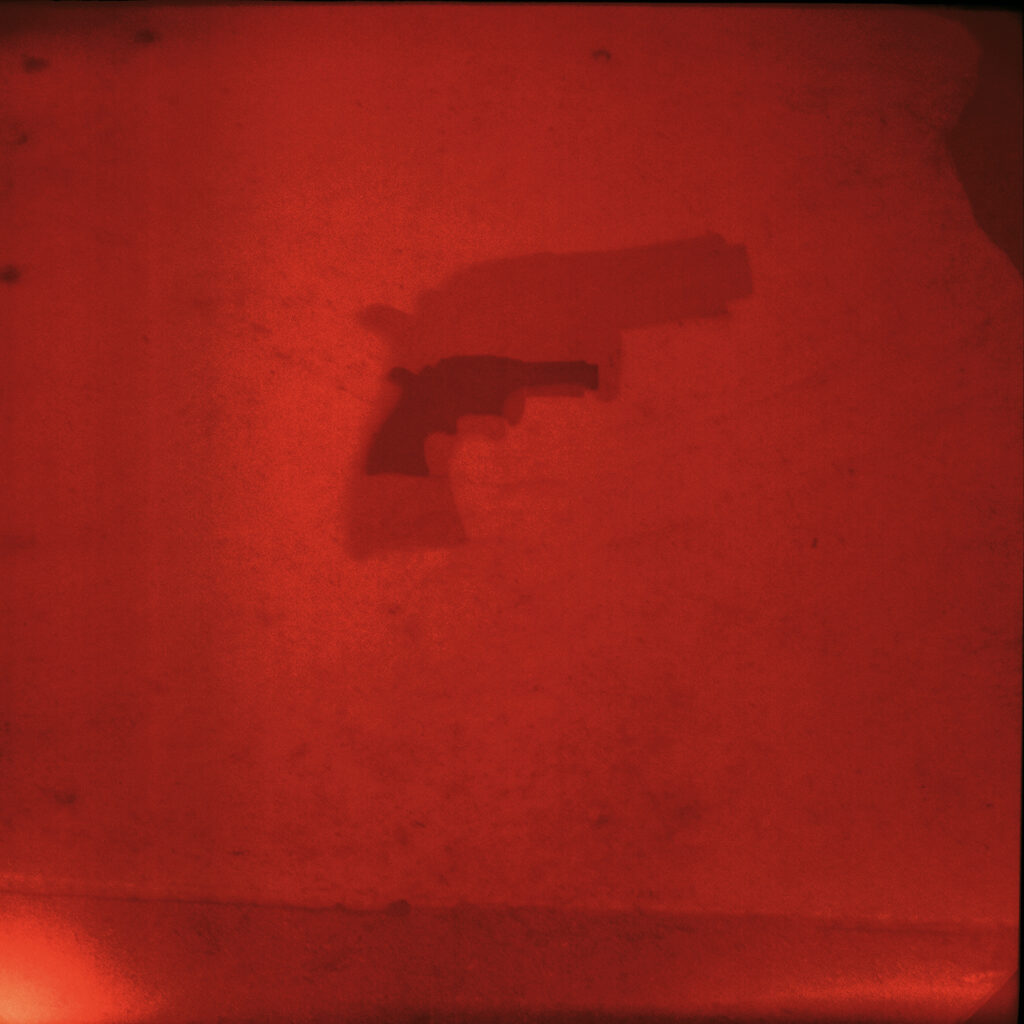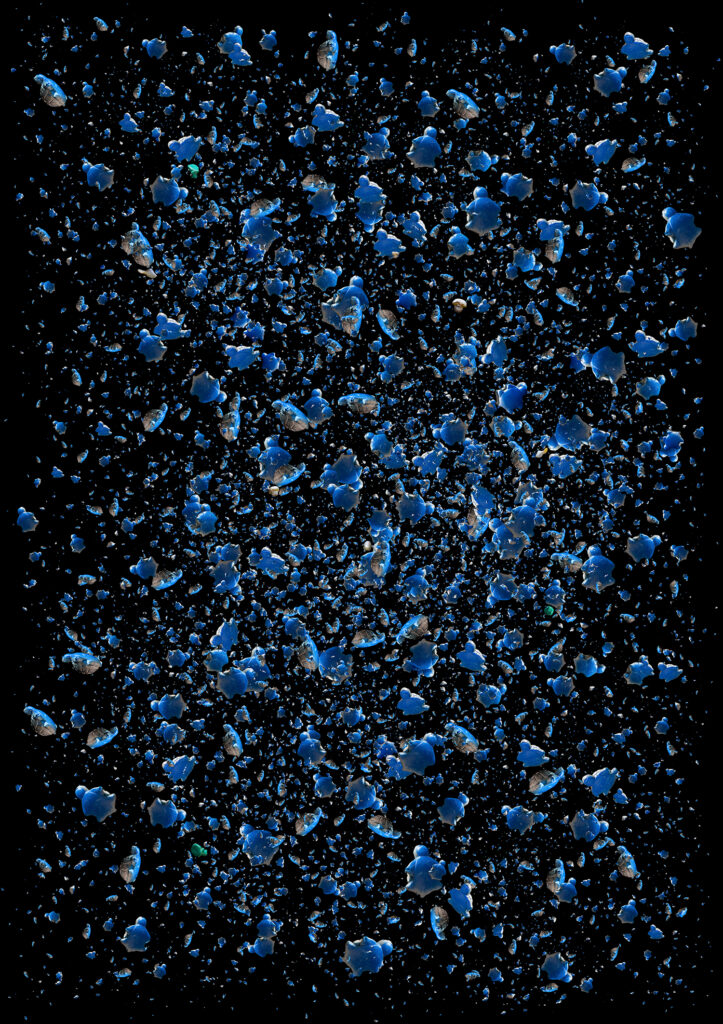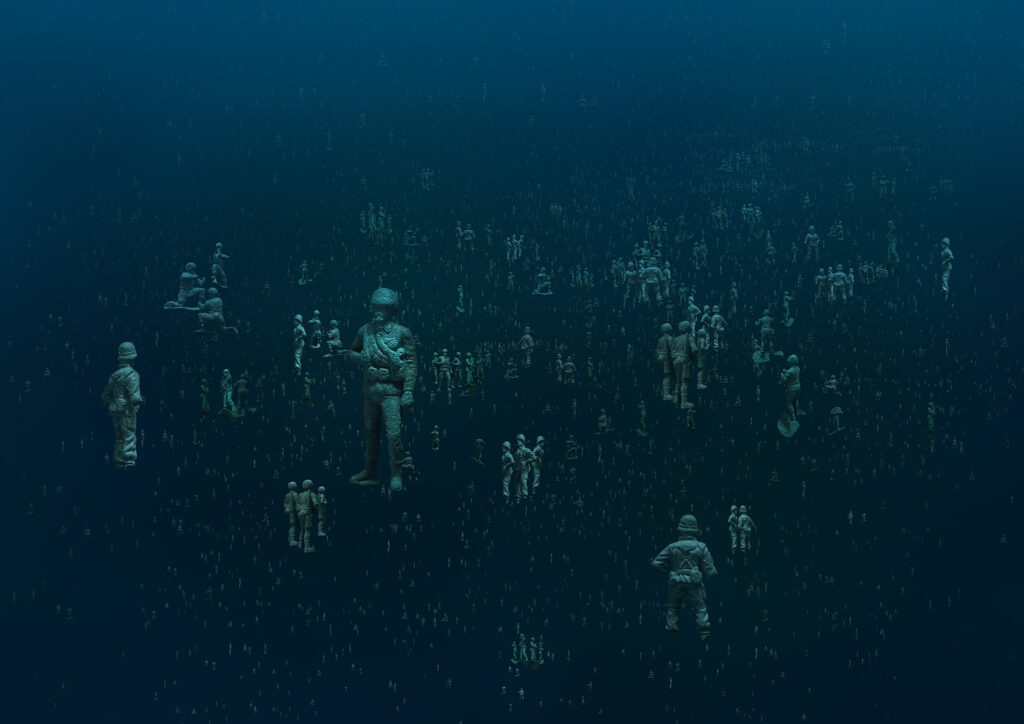Roland Belgrave Contemporary
Contemporary photography with a firm emphasis on the environment and climate change.
Mandy Barker
Images in this exhibition include those in the series ‘Crown’ ‘Lunasea’ and ‘Shelf Life’.
Striving to be a plastic-free exhibition.
Photographer Mandy Barker addresses the current global crisis of marine plastic pollution. Barker collects debris from shorelines across the world and transforms them into powerful and captivating images. This year at Photo London I will be exhibiting a solo show by Barker. A large number of images will be shown for the first time in the UK.
An important show by an acclaimed British photographer addressing one of the most pressing issues of our time.
In June 2019 Barker took part in the ‘Henderson Island Plastic Pollution Expedition’ which was awarded the title of an ‘Explorers Club Flag Expedition’. With only 3 – 5 expeditions per year recognised in this way – previous others having included the Apollo 11 Space Mission, and the dive to Challenger Deep.
Barker’s photographs from this project and exhibited with Roland Belgrave illustrate the array of plastic that has washed up on the remote, uninhabited Henderson Island, part of the Pitcairn Islands in the South Pacific – which is one of the largest Marine Protected Areas in the world.
Whilst on Henderson Island, Barker made a working camera constructed from marine plastic debris recovered from 9 different countries and oceans around the world. Barker chose to represent this unique UNESCO World Heritage site, home to many endemic species, and approximately 10 tonnes of plastic – by using recovered marine plastic debris itself to take the images.
“The images taken with this camera have passed through the cavity of a chicken feeder – to give a new thought process and unique focus, to the issue of plastic – photographing the very pollution it is itself, created from”
This Camera will be on display for the first time anywhere on booth W14 at Photo London 2023.
At first glance, Barker’s images are reminiscent of sea creatures and corals suspended in a dark void beneath the sea, but closer inspection reveals a more disturbing reality. From footballs to fishing nets, cotton-buds to coffee-cup lids, Barker highlights the incongruous plastic items now ubiquitous in our seas. Currently, 8 million tonnes of plastic end up in the world’s oceans every year and if these trends continue, our oceans could contain more plastic than fish by 2050.
From accompanying scientists on an expedition from Hawaii to Japan, tracing the debris of the 2011 Tsunami, to a voyage on board Greenpeace’s Beluga II to the Inner Hebrides, Mandy Barker has followed a trail of plastic pollution across the globe. The images resulting from these expeditions have become some of the most recognisable visual commentary on marine plastic pollution.
Barker says, “For the past decade, I have researched and documented the impact of oceanic waste, combining art and science to raise awareness. I hope to inspire positive action in tackling this increasing environmental challenge which is of global concern”.
In the way of introducing us to her practice, Barker takes us back to her early days, the moments when she first came face to face with the looming issue of plastic waste. She tells us, “I grew up in Hull, a port on the East coast of England. Growing up there as a child I spent a lot of time walking the beaches, collecting natural objects such as stones and driftwood. Over time I began to notice more and more man-made waste was washing up onto the shore of a local nature reserve inhabited by deer, seals and rare birds… At the same time, I was studying for my Masters Degree in Photography and I realised that I could use photography to inform and educate about the issue. Perhaps people who didn’t live near to the sea and didn’t know what was going on. I was inspired by scientific research surrounding marine plastic and I began to contact scientists to ask questions. This then led on to my work reflecting their research, and in turn has led me to be able to speak about both.”





